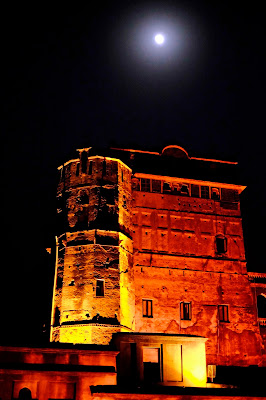 |
| Man Mandir or Man Singh Palace This is the citadel of the main fort at Gwalior. The fort changed hands and purposes through the centuries, this is reflected in the eclectic architecture and sprawl of the walls. At various times it has resonated to the sounds of battle at the fort walls; a centre for performing arts, the Gwalior gharana is one of the oldest Khyal Gharanas and flourished under the patronage of Akbar and his favorite singers including the famous Miyan Tansen ; a palace, and the agonised groans of the political prisoners of a grim prison. The sound and light show is very well done and explains the history of the fort through the ages. |
Tuesday, 6 December 2016
Central India- Tales These Stones Tell
Subscribe to:
Comments (Atom)












